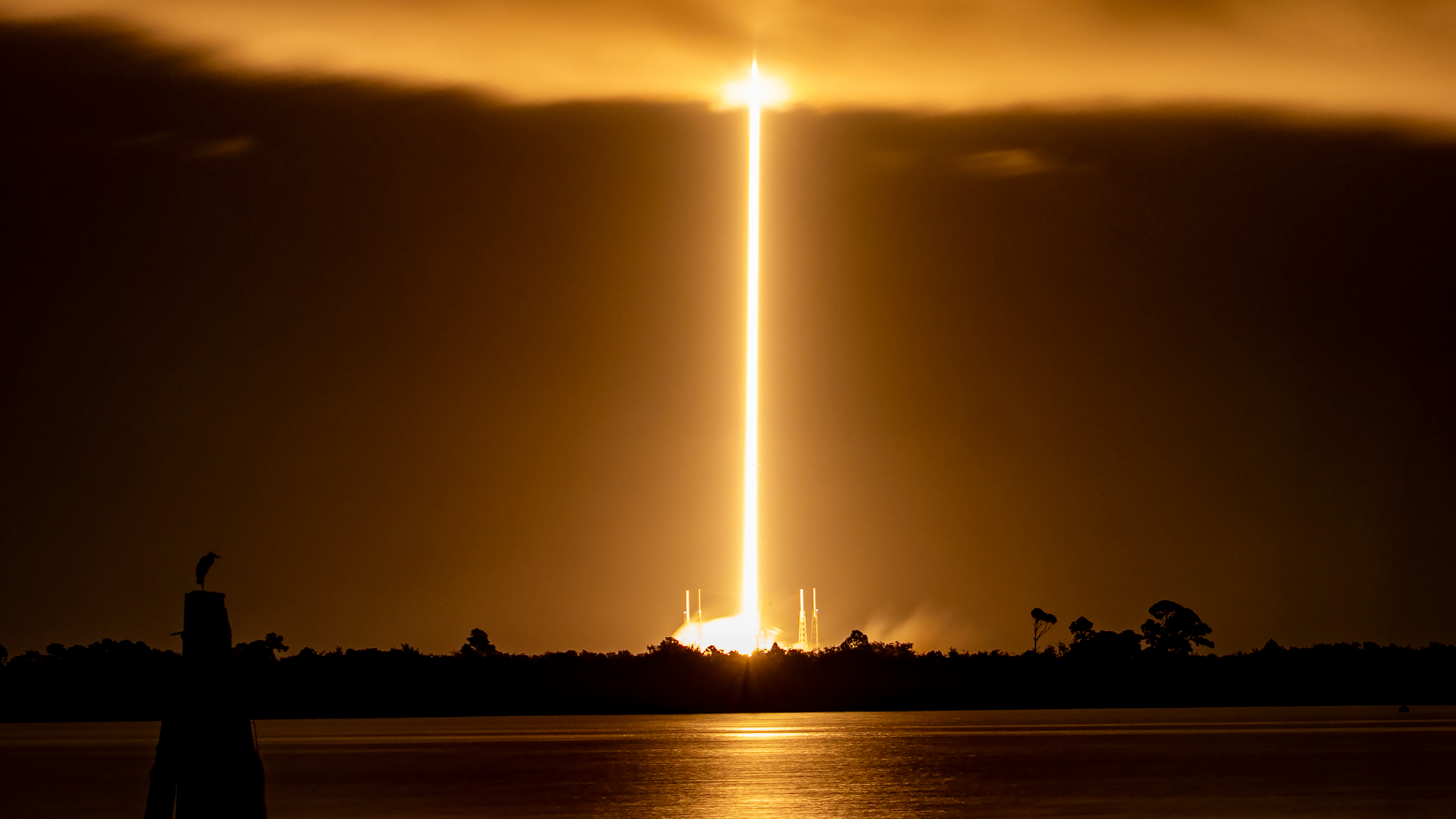A SpaceX Falcon 9 rocket launched 22 Starlink satellites from Florida's Space Coast Friday evening (Sept. 29) and landed on a ship at sea.
The Falcon 9 lifted off from Cape Canaveral Space Force Station today at 10:00 p.m. EDT (0200 GMT on Sept. 30).
The Falcon 9's first stage returned to Earth for a vertical landing on a SpaceX drone ship at sea about 8.5 minutes after launch, as planned.
Related: Starlink satellite train: How to see and track it in the night sky

It was the 10th liftoff and landing for this Falcon 9 first stage, according to a SpaceX mission description. The company's rocket-reuse record is 17 flights, held by two different boosters.
The 22 Starlink satellites, meanwhile, deployed from the Falcon 9's upper stage into low Earth orbit (LEO) about 65 minutes after launch.

Friday's mission was the 69th orbital launch for SpaceX in 2023. About 60% of those flights have been dedicated to building out the company's Starlink network.
Get the Space.com Newsletter
Breaking space news, the latest updates on rocket launches, skywatching events and more!
The megaconstellation currently consists of nearly 4,800 operational satellites, and the number will continue to grow far into the future. SpaceX has permission to deploy 12,000 of the craft in LEO and has applied for approval for another 30,000 as well.
Join our Space Forums to keep talking space on the latest missions, night sky and more! And if you have a news tip, correction or comment, let us know at: community@space.com.

Michael Wall is a Senior Space Writer with Space.com and joined the team in 2010. He primarily covers exoplanets, spaceflight and military space, but has been known to dabble in the space art beat. His book about the search for alien life, "Out There," was published on Nov. 13, 2018. Before becoming a science writer, Michael worked as a herpetologist and wildlife biologist. He has a Ph.D. in evolutionary biology from the University of Sydney, Australia, a bachelor's degree from the University of Arizona, and a graduate certificate in science writing from the University of California, Santa Cruz. To find out what his latest project is, you can follow Michael on Twitter.









